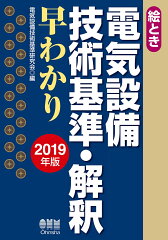

a.有効電力は変化しないので、力率の皮相電力
無効電力
。力率
の皮相電力
無効電力
。よってコンデンサの容量は
減少する。
(1)の解答(ツ)
皮相電力の減少は
(2)の解答(ニ)
b.配電線両端の電圧相差角が小さい場合、コンデンサ接地前後の配電線の電圧降下は
有効電力は変化しないため、受電端電圧は一定である。配電線電流の有効成分は一定より
ここで、は並列コンデンサ電流であり、
[tex:\therefore v_1 - v_2 = \sqrt{3}X( I_1 \sin \theta_1 - ( I_1 \sin \theta_2 - I_C)) = \sqrt{3} I_C X
(3)の解答(チ)
c.配電系統には高調波源が存在するため、コンデンサの電圧波形ひずみが拡大することがある。これは、コンデンサのキャパシタンスが共振の関係となるためであり、この対策として、コンデンサと直列にリアクトルを接続し、合成リアクタンスを高調波に対して誘導性となるようにする。
(4)の解答(ト)
(5)の解答(ハ)
この条件はコンデンサの基本波リアクタンスに対するリアクトルの基本波リアクタンス
の比
高調波次数を
とすると
(6)の解答(レ)
通常、この比は第5次高調波に対して誘導性となるようにとればよく、JISでは、6%と規定されている。
(7)の解答(ヲ)
|
|

